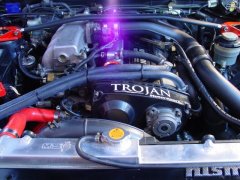Announcements
-
Similar Content
-
Latest Posts
-
By Dose Pipe Sutututu · Posted
Totally agree here @groovezog! There's advice and there's advice, sometimes the latter doesn't take inconsideration use case, budget, time, effort etc. If we all wanted the ultimate track car with a dry sump, big displacement, we would just go to the nearest Porsche dealer and buy a 911 GT3 RS (that's if they even let you these days lol). -
There is absolutely no way to tell. What we can tell you is that it is an RB. It has a single, low mounted turbo, so it would seem likely that it is an R20 or 25, but it has RB26 inlet side and valve covers. As it is clearly a frankenstein, it could be absolutely anything. It is unlikely to be good, unless the person responsible for the painting was not also responsible for the engine. That bracket is not a bracket and it is not broken. It is the top end of the suspension upright, connected to the outer end of the front upper control arm. It is your suspension. Take the wheel off and look at it.
-
Hot plugs not being a good idea in a massively boosted engine?
-
Put some more sleeve/hose over the top of the brake line for protection and let it rub? Make a plastic or metal nozzle to provide the last little bit of length of duct. The nozzle made to clear the brake line, the cooling air hose shortened to keep it away from the brake line? Make a short hard line to move the end of the brake hose away? (by far the best of the easy options).
-






Recommended Posts
Create an account or sign in to comment
You need to be a member in order to leave a comment
Create an account
Sign up for a new account in our community. It's easy!
Register a new accountSign in
Already have an account? Sign in here.
Sign In Now